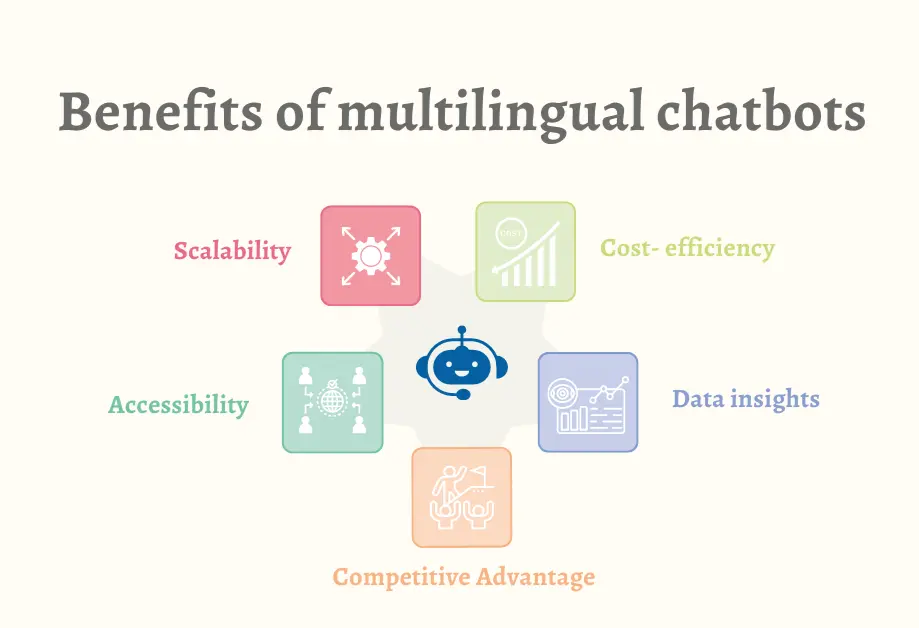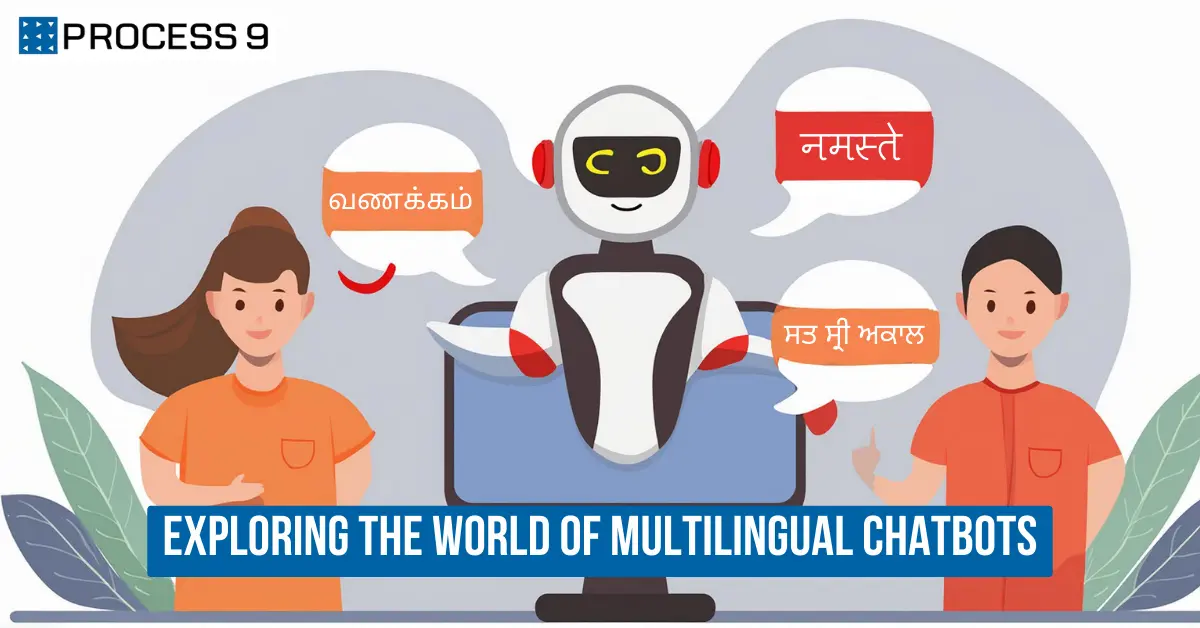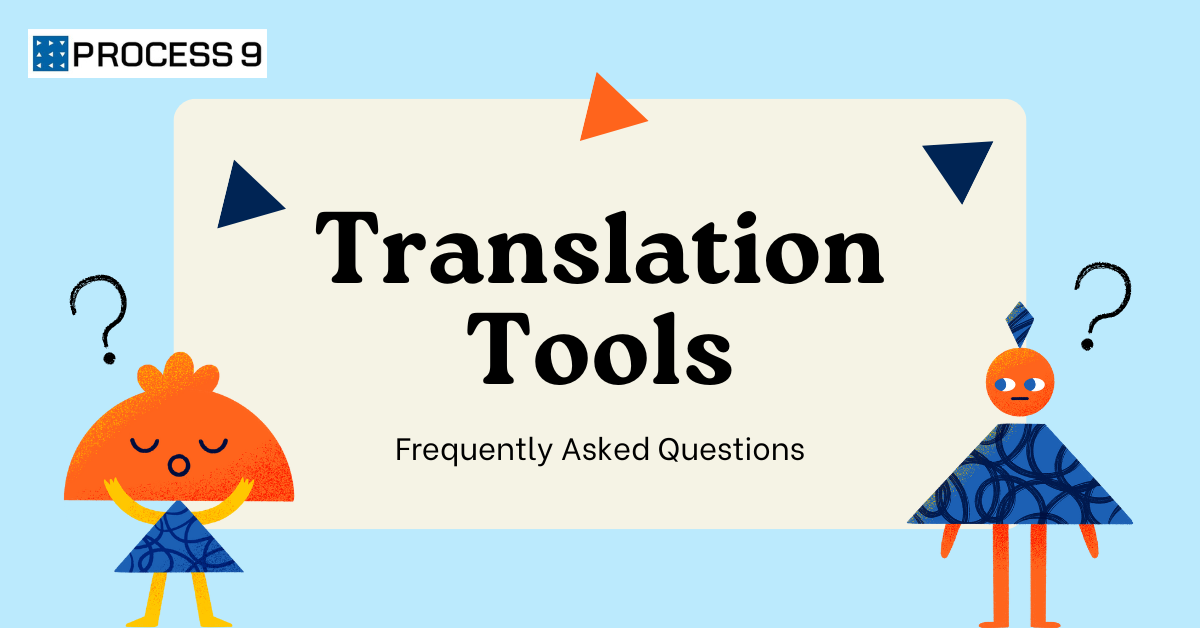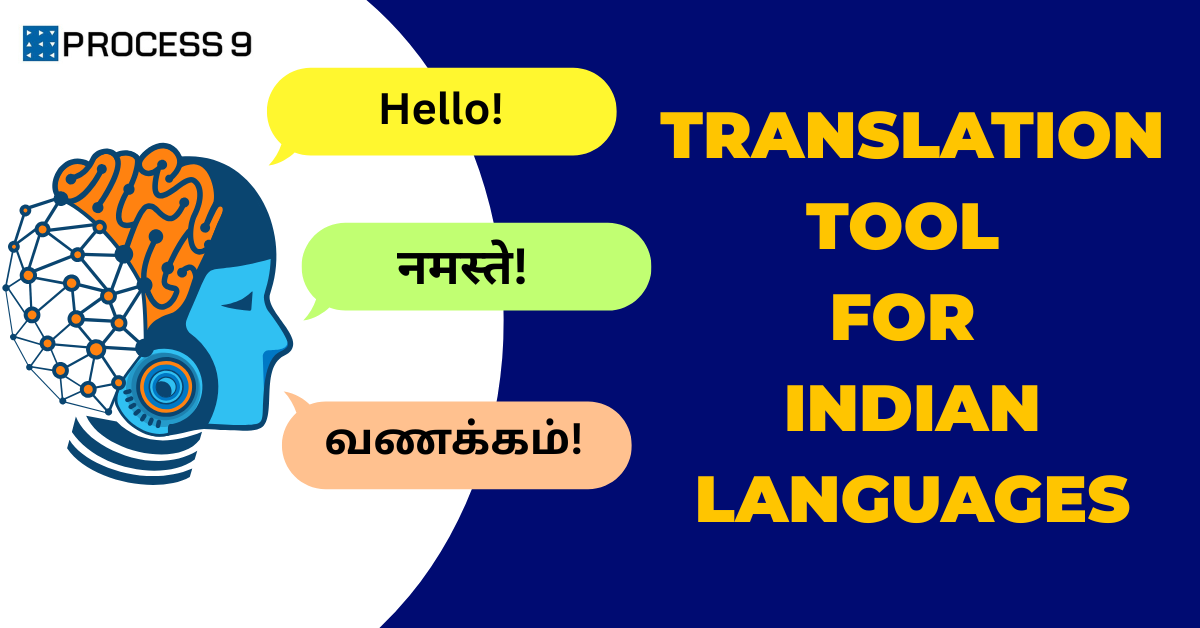In today’s digital landscape, the increasing need for multilingual communication can’t be overemphasized enough. While many multilingual communication tools and services are available to address this, multilingual chatbots have emerged as a diverse tool to bridge this language barrier. According to Gartner, most companies would need a “conversational technology-focused center” by 2025 to seamlessly manage workload and bridge language gaps. Even the widely used messaging platform Whatsapp has come up with Whatsapp bots that provide multilingual support rendering a personalised experience to users.
In this blog, we will look at this versatile solution for effortless multilingual communication, including what it is, how it works, its importance in today’s digital marketplace, and its numerous advantages.
What is a multilingual chatbot?
A multilingual chatbot is an AI-powered conversational interface or a virtual assistant that can communicate with customers in multiple languages. While the traditional chatbots were limited to one language, multilingual chatbots are designed to understand and engage with users in a language of their choice. Based on the needs of your customer, a multilingual chatbot can toggle between several languages. Chatbots can detect the customer’s language in various ways like,
- The IP address of the device used
- Language setting of the user’s web browser
- HTML language attribute
- Choice of the customer.
How does it work?
Multilingual chatbots work based on Natural Language Processing (NLP) technology and machine learning algorithms. To determine the intent behind each input, the algorithms are applied to its context, semantics, and syntax. The inherent input patterns and various linguistic nuances are identified by training these chatbots using datasets in different languages. A well-trained multilingual chatbot can easily generate a contextually relevant output in any language chosen by the user.
Why is it important?
According to various market experts, 70% of customers expect a self-service application on a website from which they make a purchase. They also cite that 40% of customers would opt for self-service instead of human contact. Unlike human customer support, multilingual chatbots have 24/7 service availability and can effectively provide first-line support. Some of the main reasons why they are important include,
Better customer reach:
Multilingual chatbots provide better access to information to those users who prefer to communicate in a language of their choice. With these chatbots, you can communicate with various customers across the globe without any language barriers.
Enhanced user experience:
Through multilingual support, users provide personalized and localized experiences to the customers. It also increases your customer satisfaction level through streamlined and efficient communication and an optimal response time to customer inquiries.
Cultural sensitivity:
A multilingual chatbot can optimize its responses based on cultural nuances. When the response of the chatbots is in line with the cultural intricacies, a better connection can be fostered with customers from various cultural backgrounds.
Also read: Mastering Multilingual Chatbots
Benefits of multilingual chatbots

Scalability
When a company expands into a new geography, a new language will likely be introduced. AI-powered multilingual chatbots are highly scalable, and new languages can be easily integrated into it, allowing you to respond quickly to changing market demands.
Cost- efficiency
Multilingual chatbots can reduce operational costs by reducing the need for manpower for customer support in multiple languages. This does not affect the quality of the services or the round-the-clock availability of support services.
Accessibility
Multilingual chatbots make information and services easily accessible to language-first users. While allowing customers to communicate in their preferred language and access the resources they require, multilingual chatbots promote inclusivity for all types of users.
Data insights
Multilingual chatbots analyze user interactions across multiple languages. Through this analysis, these bots can generate valuable insights for the business about customer preferences, behavior patterns, and market trends. This will help businesses make informed decisions and devise targeted strategies.
Process Nine: Your trusted chatbot localization partner
MoxWave, Process Nine’s best-in-class chatbot Translation / Localization solution, can deliver personalized chatbot experiences in a variety of linguistic and cultural contexts. Whether it’s a live chat or a menu-based chat, MoxWave has intuitive ways to interact and engage with customers. It has robust language detection and understanding capabilities and can identify the preferences of the users and translate the texts accordingly. MoxWave can be easily integrated with various social media channels and other chat platforms like WhatsApp, increasing your visibility among customers.
Conclusion
Multilingual chatbots are bringing a new era to digital communication by bridging the language gap and fostering cross-cultural interactions. These AI-powered virtual assistants are revolutionizing customer service, boosting business growth, and promoting user inclusivity. As linguistic presence broadens in the digital landscape, multilingual chatbots are going to play an extensive role in business communication.
Are you planning to expand your business’s reach beyond borders or to improve customer satisfaction through better support? Contact our localization experts today







Share: